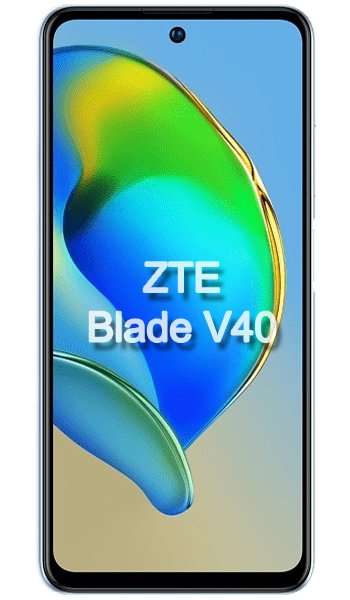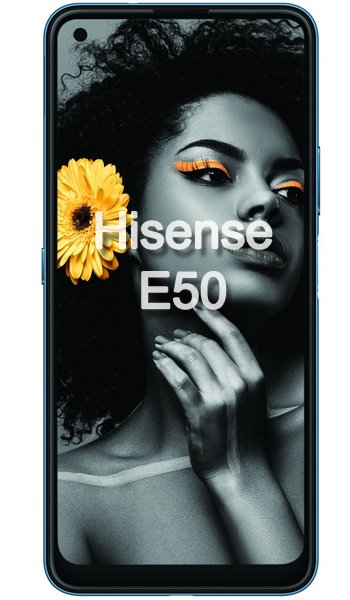ZTE Blade V40 vs HiSense Hisense E50 Comparison and Differences
Smartphone 1

ZTE Blade V40
Smartphone 2

HiSense Hisense E50
Smartphone 3
ZTE Blade V40 or HiSense Hisense E50 Specs Comparison
or
 Common specs
Common specs
| Brand and model | ZTE Blade V40 | HiSense Hisense E50 | |
| Rating | (+) | (+) | |
| Release date | July, 2022 | November, 2021 | |
| Dimensions (HxWxD) | 165.8 x 77.2 x 8.7 mm | 6.53 x 6.53 x 3.04 in | 165.9 x 77.0 x 9.4 mm | 6.53 x 6.53 x 3.03 in | |
| Weight | 199 g | 7.02 oz | 219 g | 7.73 oz | |
| Body Build | Polycarbonate | Plastic | |
| Case | buy from Amazon | buy from Amazon | |
| Colors | Black, Cyan | Blue, Gray | |
| Battery | 5000 mAh, Li-Polymer, non-removable | 5100 mAh, Li-Ion, non-removable | |
| Approximate price | |||
| Check price | from Amazon | from Amazon |
 Screen
Screen
| Technology | Amoled | IPS | |
| Touchscreen | capacitive touchscreen | capacitive touchscreen | |
| Display colors | 16M | 16M | |
| Screen size | 6.67" in | 6.55" in | |
| Screen area | |||
| Screen format | 20:9 (height:width) | 20:9 (height:width) | |
| Screen to body ratio | 83% | 82% | |
| Screen resolution | 1080 x 2400 px | 720 x 1600 px | |
| Screen PPI /points per inch/ | 388 PPI | 269 PPI | |
| Screen protection | Scratch resistant | ||
| Screen protector | buy from Amazon | buy from Amazon |
 Camera and Video
Camera and Video
| Rear camera, main | 48 MP, Triple | 13 MP, Triple | |
| Camera specs | -48 MP, ƒ/ 1.8, (wide), -2 MP, ƒ/ 2.4, (macro), -2 MP, (depth) |
-13 MP, Unknow, (wide), 0.80 µm -5 MP, ƒ/ 2.4, (depth), -2 MP, (macro) |
|
| Functions | Dual LED flash | LED flash | |
| Video | 1080p video | 1080p video | |
| Front camera, selfie | 8 MP, Single | 8 MP, Single | |
| Specifications | 8 MP, ƒ/ 2.0 | 8 MP, ƒ/ |
 Performance
Performance
| Operating system - OS | Android 11 Red Velvet Cake | Android 11 Red Velvet Cake | |
| Chipset | - Unisoc Tiger T618 (12 nm) | - Spreadtrum Unisoc SC9863A (28 nm) | |
| CPU | - Octa-Core (2 x ARM Cortex A75 2.0Ghz + 6 x ARM Cortex A55 1.8Ghz) | - Octa-Core (4x Cortex A55 1.6 GHz + 4x Cortex A55 1.2 GHz) | |
| GPU | GPU ARM Mali-G52-MP2 | PowerVR GE8322 | |
| External memory | microSDXC (uses shared SIM slot) | ||
| Internal memory | 4GB 128GB, 4GB · 128GB | 4GB 64GB, 4GB · 64GB |
 Benchmark
Benchmark
| Antutu 8 Total | 210004 | 101308 |
 Communication and Connectivity
Communication and Connectivity
| SIM card | Dual SIM, dual stand-by (Nano SIM + Nano SIM) | Dual SIM, dual stand-by (Nano SIM + Nano SIM) | |
| Network | 2G / 3G / 4G / | 2G / 3G / 4G / | |
| Bands | -2G - B2 (1900), B3 (1800), B5 (850) -3G - B2 (1900), B4 (1700/2100 AWS A-F), B5 (850) -4G - B1 (2100), B3 (1800), B5 (850), B7 (2600), B8 (900), B20 (800), B28b (700), B28a (700), B38 (TDD 2600), B40 (TDD 2300), B41 (TDD 2500) |
-2G - B2 (1900), B3 (1800), B5 (850), B8 (900) -3G - B1 (2100), B2 (1900), B4 (1700/2100 AWS A-F), B5 (850) -4G - B1 (2100), B2 (1900), B4 (1700/2100 AWS 1), B5 (850), B7 (2600), B12 (700), B28b (700), B28a (700) |
|
| Speed | |||
| GPRS | Yes | Yes | |
| Edge | Yes | Yes | |
| Wi-Fi | 802.11a, 802.11b, 802.11g, 802.11n, 802.11n 5GHz, 802.11ac,Dual band ,Wi-Fi Hotspot ,Wi-Fi Direct ,Wi-Fi Display | 802.11b, 802.11g, 802.11n, 802.11n 5GHz,Dual band ,Wi-Fi Hotspot | |
| GPS | GPS, A-GPS, GLONASS, Beidou, Galileo | GPS, A-GPS | |
| NFC | Yes | No | |
| USB | Yes, USB Type C, USB On-The-Go (OTG) | Yes, USB Type C, USB On-The-Go (OTG) | |
| Bluetooth | Bluetooth 5.0, A2DP, LE | Bluetooth 4.2, A2DP | |
| Harmful irradiation |
SAR EU - 1.343 W/Kg (head), W/Kg (body) |
 Music and Audio
Music and Audio
| Radio | No | Yes | |
| Headphone jack | No | Yes | |
| Others |
 Other features
Other features
| Sensors | - Fingerprint (side-mounted), Proximity, Accelerometer, compass, gyro , Infrared port | - Fingerprint (rear-mounted), Proximity, Accelerometer , Infrared port | |
| Other extras |
- Fast charging 65.0W |
Reviews and Opinions on ZTE Blade V40 and HiSense Hisense E50
If you had to recommend one of these phones to a friend, which one would it be and why? Share your arguments using the Add Opinion button!
